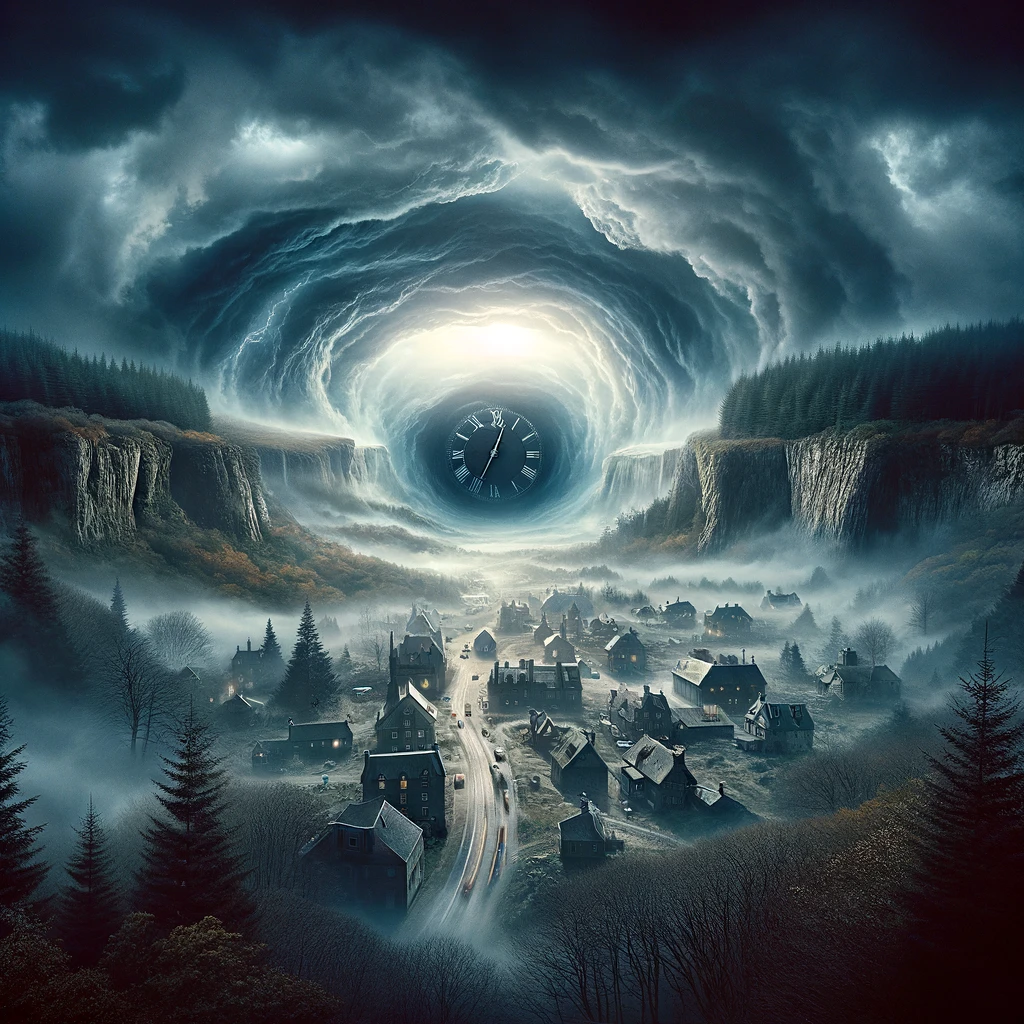TV Series DARK

At first glance, the connection between UFOs and timelines might seem as distant as the farthest star, but look a bit deeper into the fabric of science and theoretical physics, and the link becomes not only apparent but fundamentally intertwined. This concept, seemingly plucked from the pages of a speculative fiction novel, finds a compelling narrative playground in the world of the critically acclaimed TV series “Dark.” Here, the notion of time travel and the existence of multiple, intersecting timelines isn’t just a plot device; it’s the very heartbeat of the story. The series posits a universe where timeline wars rage silently, with factions from various futures maneuvering through the shadows of time, each striving to rewrite history in their favor and prevent their own extinction.
In real life, could these unidentified objects be not visitors from distant galaxies, but rather travelers from our own future, from timelines we don’t understand, embroiled in a silent war for their very survival? “Dark” doesn’t just entertain this idea; it embroiders it into the very essence of its narrative, offering a chilling yet fascinating perspective on the timeless question of what lies beyond the known boundaries of our universe and our understanding.
The TV series “Dark” is renowned for its complex narrative and exploration of scientific concepts, primarily revolving around time travel and its implications on human relationships and history. The series unfolds in the fictional German town of Winden, where the disappearance of children uncovers the interconnected pasts of four families across multiple generations. Central to the series is the existence of a wormhole beneath the town’s nuclear power plant, which facilitates time travel between several timelines, including 1953, 1986, 2019, and other years, contributing to a multi-layered storyline that spans over a century.
“Dark” is celebrated for its intricate storytelling, character development, and the incorporation of theoretical physics, particularly concepts related to time travel and parallel universes. The show looks into the cause and effect of time travel, the paradoxes that it creates, and its profound impact on the fabric of human lives and relationships. The narrative intricately weaves these scientific notions with the personal stories of its characters, making it a compelling drama that is both intellectually stimulating and emotionally resonant.
While “Dark” doesn’t specifically mention UFOs, its scientific underpinnings and exploration of themes such as the manipulation of time, the existence of parallel worlds, and the nature of human connections resonates with broader discussions around the UFO phenomenon. The series’ approach to these subjects is grounded in theoretical physics, which might explain why someone could suggest that it contains “real science” relevant to the UFO phenomenon, despite not directly addressing it. The implication could be that the scientific rigor and creativity in “Dark” offer a framework that could be applicable or thought-provoking in the context of understanding unexplained phenomena, including UFOs.
At the heart of the series are four main families: the Nielsens, the Dopplers, the Tiedemanns, and the Kahnwalds, whose destinies are entangled not only in their present lives but also across the past and future, heavily influenced by the deeds of both their ancestors and future generations. Central to the genesis of time travel is the Tannhaus family, particularly H.G. Tannhaus, a clockmaker in the 1950s, whose attempt to save his deceased family leads to the inadvertent creation of the first time machine, setting off a chain of events that ensnare the town’s inhabitants in a relentless loop.
Among the pivotal events that drive the series forward is the mysterious disappearance of Mikkel Nielsen in 2019, who finds himself in 1986 and eventually grows up to become Michael Kahnwald, father to Jonas. This bewildering incident not only catapults Jonas into a quest for understanding but also unravels the cave’s time-travel secrets to others. The narrative further thickens with the formation of the Sic Mundus, or The Travelers, led by Jonas, who aim to manipulate time travel’s consequences. Their actions across various timelines have a profound impact, as they oscillate between striving to perpetuate and shatter the time loop.
The looming apocalypse of 2020 becomes a critical juncture, around which characters’ motives and actions pivot, with figures like Claudia Tiedemann laboring to decipher and dismantle the time loop. The introduction of the Origin, a child from the union of Jonas and an alternate world’s Martha, emphasizes the show’s theme of time’s cyclic nature and the inescapability of predetermined fate, being central to the continuity of the events tormenting Winden.
“Dark” looks into the intricate web of relationships across time, presenting characters with the harrowing and often tragic realizations of their choices and their ripple effects. For example, Ulrich Nielsen’s desperate attempt to alter the past by targeting a young Helge Doppler only cements the very events he aims to avert. The series culminates in the revelation that the entangled fates of Winden’s residents are a consequence of a knot existing in two intertwined worlds, originating from H.G. Tannhaus’s experiment in a third, original world. The resolution lies in undoing this knot, a task that necessitates the erasure of Jonas and Martha’s existence to reinstate time’s natural flow.
Through its complex multi-timeline narrative and exploration of characters across different ages, “Dark” offers a profound meditation on time travel’s philosophical and emotional implications, questioning the notions of fate, the interconnectedness of actions, and the human yearning for redemption and clarity amidst predestined paths.


